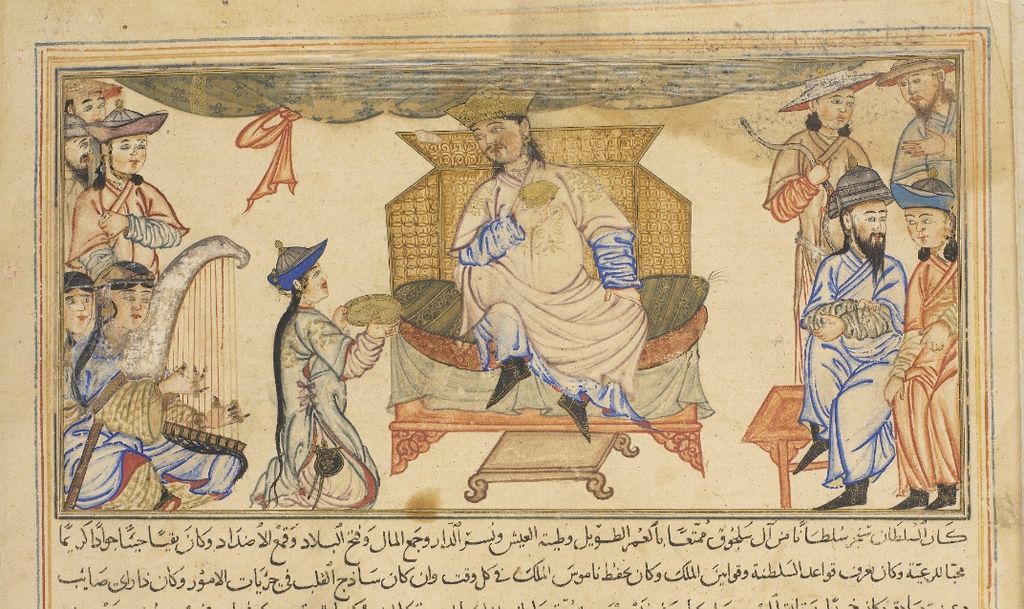Ahmad Sanjer the son of great Malik Shah was the sultan of the great Seljuk empire. He was born on October 1086 in sinjar a town situated in the borderland between Syria, Iraq and Turkey.
Some historians believe that he was named before his birthplace and others believe that Sanjar is a Turkic name, denoting “he who pierces or he who thrusts. He has participated in battles of succession against his siblings and a nephew named as Mahmud I, Barkiyaruq, Malik Shah II and Muhammad I.

In 1096, he was given the territory of Khorasan to administer under his sibling Muhammad I. For the next many years Ahmed Sanjar became the ruler of majority of Iran having capital at Nishapur. He hold the position of Seljuq prince of Khorasan from 1097 till 1118, when he held the reign as the Sultan of the Seljuq Empire, which he ruled up to his death in 1157.

Appointed governor of Khorasan by his half brother Berk yaruq, who was succeeded from Malik Shah as the sultan, Sanjar in reality acted as an independent prince throughout his tenure at the throne and after the demise of his full brother Muhammad in 1118, he was regarded as the sultan of the Seljuq house.
His long lasting reign saved Khorasan from the internal struggles that ultimately destroyed the other Seljuq lines and provide him with the privilege to maintain an organized government in spite of the growing dangers that clustered around him.
One of the danger to Saljuq rule, which originally emerged during Sanjar’s long rule, was the at last fruitful endeavor of the caliphs in Baghdad to restore the political intensity of the Abbasid caliphate through debilitating their Saljuq rivals.

Mostarsed revamped the dividers of Baghdad and was the first caliph in quite a while to actually lead armed forces in fight. The strain between the Saljuqs and the Abbasid caliph turned into a crises in 1135, when Mostarsed challenged Sanjar’s nephew Masʿud, who at the time was the subordinate ruler of Iraq, in fight.
The caliph was taken prisoner and kicked the bucket in bondage in Sawwal august 1135. A large number of the artistic sources straightforwardly blame the Saljuqs for having appointed the caliph’s homicide.
The sources report that Masʿud held Mostarsed under furnished watchman while moving him around with his camp. However, when a consulate from Sanjar arrived at Masʿud, the caliph’s tent was segregated and the vast majority of his guards had been eliminated.
A total of 24 soldiers, assumed Ismailis, entered the tent to kill Mostarsed. Hardship between the Saljuqs and the Abbasid caliphs proceeded under Mostarded’s child and replacement, al-Rased bellah. He considered the Saljuqs straightforwardly answerable for the homicide of his dad and started assembling his powers.
In any case, in 1136 Masʿud attacked Baghdad, and Rased was put to flight. Masʿud immediately constrained the olama to oust Rased and to designate the more flexible al Moqtafi bellah to the caliphate. Rased was killed in 1138 by a band of Khorasanis who were in his administration.
Once more, huge numbers of the archaic sources articulate the doubt that these professional killers, as well, were the messengers of the Great Sultan Sanjar.

In 1141, Ahmad, alongside Garshasp II, walked to go up against the Kara Khitan danger and connected with them close to Samarkand at the Clash of Qatwan.
He endured a surprising thrashing, and Garshasp was executed. Ahmad got away with just fifteen of his first class horsemen, losing all Seljuq domain east of the Syr Darya (Jaxartes). Sanjar’s as well as Seljuks’ rule collapsed as a result of yet another unexpected loss, this time at the hands of the Seljuks’ own tribe, in 1153.
Sanjar was captured during the battle and held in prison until 1156. It carried chaos to the Empire circumstances later misused by the successful Turkmens, whose swarms would overwhelm Khorasan unopposed, unleashing gigantic harm on the region and esteem of Sanjar.
Sanjar at last got away from imprisonment in the fall of 1156, yet soon passed on in Merv present-day Turkmenistan, in 1157. After his death, Turkic rulers, Turkmen ancestral powers, and other auxiliary forces sought Khorasan, and after a significant stretch of encounters, the region was at long last vanquished by Khwarazmians in the mid 1200s.

Ahmad Sanjar was married to a girl named as Terken Khatun with whom he had two daughters. After the death of Terken, Sanjar married Rusudan, the daughter of Demetrius I of Georgia, widow of sultan Masud Temirek.
He had no children with her. Ahmad Sanjar died in the year 1157 and was buried in Merv. His tomb was later destroyed by the Mongols in 1221, during the time of their invasion of the Khwarezmian Empire.
The death of Sanjar implied the end of the Seljuq dynasty as an empire after that they just controlled Iraq and Azerbaijan. Sanjar is considered as perhaps the most noticeable Seljuq kings and was presumably the longest dominant Muslim ruler until the Mongols showed up.
In spite of the fact that of the Turkic root, Sanjar was profoundly Iranized, and because of his accomplishments, even turned into an amazing figure like a portion of the fanciful characters in the Shahnameh.
In fact, middle age sources portrayed Sanjar as having “the magnificence of the Khosrows and the wonder of the Kayanids”. Persian verse thrived under Sanjar, and his court incorporated probably the best Persian artists, for example, Mu’izzi, Nizami Aruzi, and Anvari.